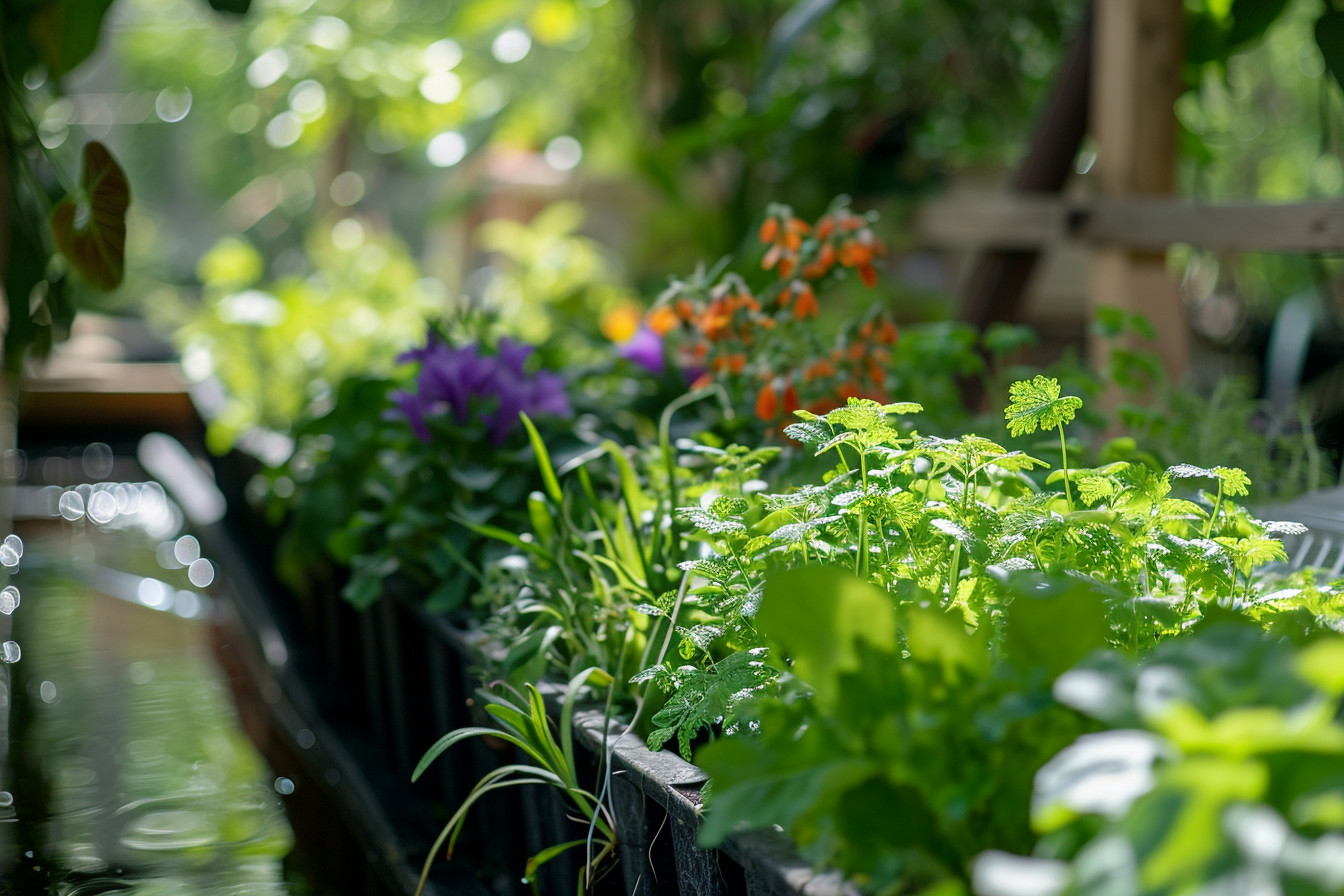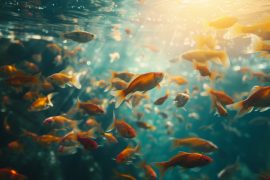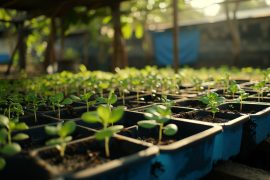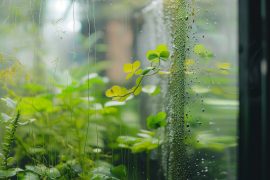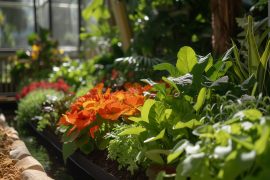As a seasoned gardener, I’ve always found peace in the rhythmic dance of planting and harvesting. But lately, I’ve been diving into the world of aquaponics, and let me tell you, it’s a whole different ball game. It’s not just about soil and seeds anymore; it’s fish tanks and water flow, bringing a new level of harmony to my green space.
I’m here to break down the nitty-gritty of aquaponics versus traditional gardening. Don’t worry; I’ll keep the jargon to a minimum. Whether you’re a green thumb guru or a budding novice, I’ve got some insights that’ll shed light on these two distinct approaches to growing your favorite plants. Let’s dig in and discover the roots of what makes each method unique.
Aquaponics: A New Approach to Gardening
Reflecting on the ever-evolving world of gardening, I’ve found myself immersed in the tranquility of aquaponics. This isn’t your traditional soil-based planting; it’s a symphony of water and life that dances together in a closed-loop system.
In the heart of an aquaponics setup, you’ll find the fish tank. Think of it as the engine room, with fish providing the necessary nutrients through their waste. What’s fascinating here is the symbiotic relationship; the plants filter and purify the water, which in turn supports the fish. It’s like watching an elegant ballet of nature’s cycles right in my own backyard.
The Core Components of Aquaponics
At its core, aquaponics leverages a few key elements:
- The Fish Tank: Home to the fish, it’s the nutrient powerhouse.
- The Grow Bed: Where the plants reside, it’s filled not with soil but with a neutral medium like clay pellets.
- The Water Pump and Filtration System: These circulate water between the fish tank and grow bed, keeping the environment balanced.
This intertwined setup allows me to grow a surprising variety of plants. Leafy greens like lettuce thrive, and I’ve even had success with herbs and cherry tomatoes, which makes for some fresh and flavorful salads!
Simple Terms for Complex Cycles
Maybe you’re thinking, “This sounds complicated,” but it’s simpler than you’d imagine. Let’s break down the nutrients cycle in uncomplicated terms:
- Fish eat and produce waste.
- Bacteria convert this waste into nitrates.
- Plants use these nitrates as food.
- Clean water cycles back to the fish.
There’s no need for synthetic fertilizers or pesticides either, which is a huge win for our planet. I’m telling you, this self-sustaining ecosystem not only calms the mind but it simplifies gardening in ways you wouldn’t believe.
Traditional Gardening: The Tried-and-True Method
Every time I dig my hands into the soil, there’s a profound sense of coming home. Traditional gardening has always been more than just a method of growing food; it’s a dance with nature, a heritage passed down through generations, and a peaceful retreat from the pace of modern life.
It’s like the gardens are sharing their own stories; one might tell of the victory gardens of the World Wars, while another whispers about the calm of Japanese Zen gardens. The history of gardening is rich and as varied as the plant species we’ve cultivated.
With traditional gardening, you need to know your tools and techniques. The spade, the rake, and the hoe are just as vital as understanding pH levels in the soil and the right time to plant your seeds. The latter is something I learned through trial and error over the years.
For folks who might not have a green thumb, let’s break down some gardening lingo:
- Composting: It’s basically recycling for your garden. Take your kitchen scraps, lawn clippings, and even those pesky leaves, and over time they’ll turn into gold, well, compost gold, that is.
- Germination: It’s the magical moment when a seed begins to sprout and grow. It’s a tad like the garden’s way of whispering, ‘Hey, I’m alive!’
- Deadheading: This might sound grim, but it’s just snipping off the spent flowers to encourage new growth. Think of it as the plant version of getting a haircut for better, bushier hair.
I personally love taking cuttings from my favorite plants and propagating them. It’s like making free clones of your top performers. My garden’s got a lineage of tomato plants that’d impress any royal family!
Gardening’s health benefits can’t be overstated either – it’s exercise that doesn’t feel like exercise, and there’s the unbeatable feeling of sun on your skin. Plus, the harvest is the freshest produce you could ask for, chock full of nutrients without a trace of a barcode.
Understanding the Key Differences
Before I dove into aquaponics, all my gardening was done in the soil. Getting into aquaponics felt a bit like I was joining an exclusive club – it’s high-tech, sleek, and even a little space age in comparison to my trusty shovel and hoe.
Aquaponics seamlessly combines aquaculture and hydroponics, where fish and plants live in a symbiotic relationship. In this setup, the fish waste offers an organic nutrient source for the plants, and in return, plants cleanse the water for the fish. It’s this closed-loop system that really sets aquaponics apart. There’s a beauty in watching your tilapia swim around, knowing they’re helping your plants grow without you lifting a finger to apply fertilizer.
On the flip side, traditional gardening is steeped in history. It’s more than just planting seeds; it’s an embodiment of heritage. I learned about tools from my grandpa and garden techniques that date back generations. It’s hands-on, soul-nourishing work. Distinctly physical, whereas aquaponics feels more like a careful calibration – less dirt under the fingernails, more monitoring pH levels and water quality.
When it comes down to it, there’s a place for both. My traditional garden taught me about the rhythm of seasons and how different plants have different needs. I know the joy of turning compost to find earthworms thriving, which indicates a healthy soil ecosystem.
With aquaponics, space is no longer an issue. I can grow an abundance of produce in a fraction of the space and water that traditional gardening requires. And pests? They’re hardly on my radar anymore. No more back-breaking weeding sessions or fretting over caterpillars chomping through my cabbages.
From a sustainability standpoint, aquaponics is a game-changer. It’s incredibly water-efficient – an important factor in areas prone to drought. Let’s lay out some of these differences in simple terms:
- Water Usage: Traditional gardening depends heavily on consistent watering. Aquaponics recycles the same water within its system.
- Space Efficiency: You can grow more in less space with aquaponics due to its vertical stacking ability.
- Pest Management: Pesticides are often a must in traditional gardening. Aquaponics significantly reduces the need for pest control, as the closed system is less prone to large infestations.
Water and Nutrient Management: Aquaponics vs. Soil-based Gardening
As I delve deeper into aquaponics, it’s become clear that water and nutrient management are at the heart of what sets it apart from soil-based gardening. It’s a bit like comparing a self-cleaning fish tank with a garden that needs regular weeding and watering.
In aquaponics, fish waste provides a rich nutrient source for the plants. It’s a beautifully harmonious relationship – the fish produce the nutrients, and the plants, in turn, filter and purify the water, which then cycles back to the fish. It’s nature’s own recycling system, refined into a science.
Soil-based gardening, on the other hand, involves a more hands-on approach. I’ve spent countless hours perfecting the art of composting to enrich the soil, figuring out the right fertilizer mixes, and timing my watering schedules to avoid drought and root rot. The goal is to mimic the natural nutrient cycle, but there’s always an element of trial and error.
When I first started, terms like “nitrogen cycle” and “pH levels” sounded daunting. But as I got my hands dirty, they became second nature. For example, managing pH in soil requires regular testing and amendments, while in aquaponics, the system generally keeps the pH more balanced, thanks to the natural processes at work.
Remember my cherry tomatoes? Initially, I compared their growth in both systems:
| Aquaponics | Soil-Based | |
|---|---|---|
| Growth Rate | Faster | Slower |
| Water Usage | Up to 90% less | Regular |
| Pest Problems | Fewer | More |
| Maintenance | Monitoring | Weeding, Watering, etc. |
The results were eye-opening – aquaponics offered a clear advantage in efficiency and conservation of resources.
But don’t get me wrong, there’s a meditative quality to traditional gardening that aquaponics can’t match. Feeling the soil crumble between my fingers, the earthy scent that rises after watering, and the slow, steady pace of change with each season – it’s a form of connection with nature that’s deeply grounding.
Growing Systems: Fish Tanks or Rows of Dirt?
Ever since I dipped my toes into the serene world of gardening, I’ve been captivated by the variety of options available for growing things. Aquaponics, on one hand, seems like a glimpse into the future, with its closed-loop system where the hum of a water pump is a constant reminder of innovation. Traditional gardening, on the other hand, is like retracing the steps of our ancestors, feeling the warmth of the sun on my back and the cool earthy embrace of soil between my fingers.
As an avid gardener, I’ve explored both methods, and let me tell you—each has a peculiar charm. In my aquaponics set-up, seeing fish swim lazily in their tank while plants thrive above is almost magical. It’s like observing two different worlds—one underwater, one aerial—coexisting perfectly. The science behind it is positively fascinating; plants extracting nutrients directly from water enriched by fish waste—it doesn’t get more efficient than that.
But then, there’s the undeniable allure of traditional gardening. There’s history in the rows of dirt, an ancient practice passed down through generations. While setting up beds and preparing soil, I’ve often felt like I was part of a time-honored ritual. The digging, planting, and nurturing have a rhythm that feels meditative. And there’s nothing quite like the experience of brushing aside a layer of dew-dampened soil to plant a seed or bulb.
Transitioning between these two practices, I’ve noticed how each appeals to different parts of me. Traditional gardening grounds me, linking me to the countless gardeners who have cultivated the Earth before. It’s an exercise in patience and endurance, with my hands acting as the most fundamental tools. Composting, crop rotation, companion planting—it’s all a tapestry woven with threads of knowledge and intuition.
Then switching gears to aquaponics makes me appreciate the ingenuity of creating eco-friendly cycles that mimic natural ecosystems. The technical aspects are incredibly engaging, from balancing ammonia levels to understanding the symbiosis between my fish and their leafy companions. And while it might seem complex, I’ve found that anyone can get the hang of it with a bit of guidance. Who knew I’d become so proficient at testing water quality or tweaking nutrient solutions?
Environmental Impact: Comparing Sustainability in Aquaponics and Traditional Gardening
When I’m tending to my garden, the serenity envelops me; it’s the kind of tranquility that makes the whole deal with dirt under my fingernails worth it. I’ll bet it’s similar for those who play around with water pumps in aquaponics. But the green-thumb buzz isn’t just about inner peace. Sustainability is a huge deal, and that’s where the nitty-gritty of environmental impact comes in for both aquaponics and traditional gardening.
Let’s cut to the chase: aquaponics is pretty much a closed-loop system. It’s like a mini eco-friendly world where plants and fish live in harmony. The fish produce waste—don’t worry, it’s not as gross as it sounds—that acts as natural fertilizer for the plants. In return, the plants clean the water for the fish. It’s a circle of life thing without the singing lions, and the beauty of it is that it uses up to 90% less water than soil-based gardening. Yep, you read that right, and for places where water’s as scarce as a snowball in the desert, that’s a massive plus.
But let’s not jump the gun here, because traditional gardening isn’t exactly the bad guy in this story. It’s been around since, well, forever—and there’s a reason for that. Rotating crops and companion planting are age-old techniques that fend off pests and diseases naturally without resorting to a chemical warfare on the environment. Plus, there’s something about planting a seed in the earth and watching it grow that’s insanely satisfying. Traditional gardens can also bolster biodiversity, inviting all sorts of critters from bees to birds into the ecosystem.
I’ve come across folks who’ve turned their backyards into veggie-producing wonderlands, and these patches do more than just yield fresh tomatoes (although, let me tell you, fresh tomatoes are a solid perk). So, taking care of the soil by adding compost or other organic matter makes these gardens tick, sinks carbon, and even helps with water retention.
| Method | Water Usage | Biodiversity Benefit | Carbon Sequestration |
|---|
Pros and Cons: Weighing the Benefits and Challenges
As I delve further into the intricacies of both aquaponics and traditional gardening, it’s crucial to unpack the pros and cons of each. There’s a certain harmony inherent in cultivating life, whether you’re nurturing plants or caring for fish. It’s not just about food production; it’s about engaging with nature, finding peace, and fostering a deeper connection with our ecosystem.
Aquaponics presents itself as a beacon of modern sustainability. It’s an impressive symphony where fish and plants grow in mutual benefit. Here’s what makes it stand out:
- Water Efficiency: Aquaponics uses significantly less water than traditional methods. This can be a game-changer in areas where water scarcity is a serious concern.
- Pesticide-Free Harvests: Thanks to its closed system, there’s generally no need for pesticides, resulting in clean and healthy produce.
- Year-Round Growth: Since it’s often implemented indoors, aquaponics offers the ability to grow food all year round without worry about weather conditions.
But it’s not free from challenges. The start-up costs can be substantial, and it requires some know-how to maintain the delicate balance of the ecosystem. If the system fails, both the fish and plants could suffer.
When I turn to traditional gardening, it’s like stepping back in time, but with a treasure trove of accumulated wisdom. Its pros are rooted in simplicity and biodiversity:
- Encourages Biodiversity: It mimics natural ecosystems and can increase local biodiversity, inviting bees, butterflies, and other beneficial creatures.
- Promotes Physical Activity: It gets you outside, hands in the dirt, which is great for mental and physical health.
- Carbon Sequestration: By taking care of the soil, we’re also doing our part in the fight against climate change.
Yet, traditional gardening isn’t without its limitations. Water usage can be extensive, and it requires a fair bit of physical labor, which can be daunting for some. Plus, it’s at the mercy of the elements, making some seasons more challenging than others.
The key to navigating these methods lies in education and experience. I’ve found that the best way to learn gardening is to get your hands dirty – literally. Whether you’re working with aquaponics systems or sowing seeds in the ground, each experience is a step towards mastering the art.
Which Method is Right for You?
Choosing between aquaponics and traditional gardening isn’t just about weighing the pros and cons. It’s also about discovering which practice resonates with your lifestyle and values. Let me share some insights to help guide your choice.
Consider Your Commitment
Getting your hands dirty planting seeds directly into the earth offers a peaceful escape. There’s something about working the soil that’s deeply fulfilling. If you’re the type who finds harmony in the rhythm of the seasons and doesn’t mind the wait or the weather-dependent nature, traditional gardening might be your match.
Aquaponics requires a strong initial commitment. You need to monitor the system closely, especially in the beginning, but once it’s up and running, it’s incredibly rewarding to see your plants and fish thrive together. It’s a harmonious ecosystem that can provide a serene sense of balance and a continuous yield.
Learning Opportunities
Whether you’re drawn to the education piece of aquaponics or the history of traditional gardening, both methods offer plenty of learning opportunities. Aquaponics might feel more technical, but don’t worry. I’ll break down the terms and processes into bite-sized pieces that are easy for anyone to understand.
Traditional gardening, on the other hand, is a gateway to learning about different plant species, soil types, and historical practices. It connects us with generations of gardeners before us and is a living history lesson right in our backyards.
Case Studies and Real-World Experience
I’ve seen amazing success stories from both camps. My friend Lara turned her rooftop into an aquaponics garden and now enjoys fresh vegetables year-round. She’s become a true advocate for the sustainability aspect, not to mention how much water she’s saving.
My own experience with traditional gardening has connected me to my community. Swapping seeds and stories with neighbors has built a local network of gardeners committed to biodiversity and organic practices.
Storytelling in the Garden
Gardening, in any form, is a narrative of growth, challenges, and triumphs. Each seed planted starts a new chapter; each harvest wraps up a storyline of dedication and care. Aquaponics systems tell the tale of a carefully balanced dance between fish and flora—a modern-day tale of synergy and sustainability.
Final Thought
So there you have it. Whether you’re drawn to the innovative water-wise world of aquaponics or the earthy hands-on approach of traditional gardening, the choice is deeply personal. I’ve found joy and challenges in both and I’m sure you will too. Remember, it’s not just about the harvest—it’s the journey of nurturing and growth that counts. Dive into whichever method speaks to you and watch your green thumb thrive. Happy gardening!
